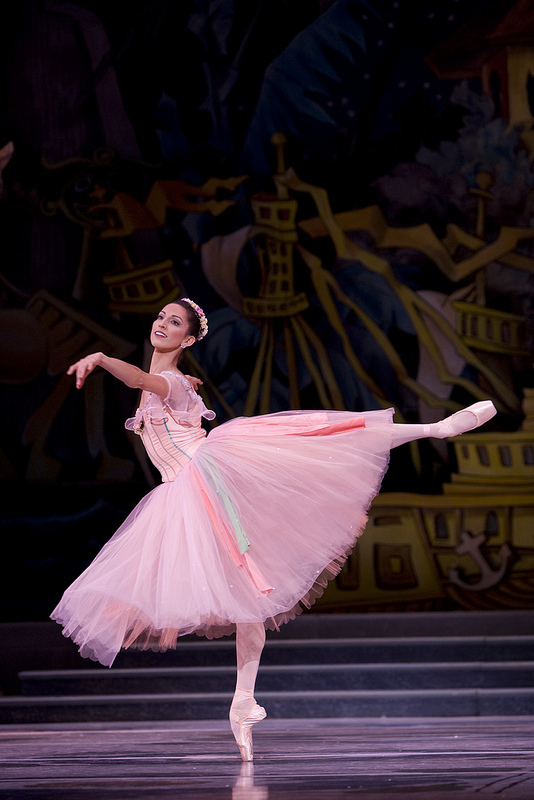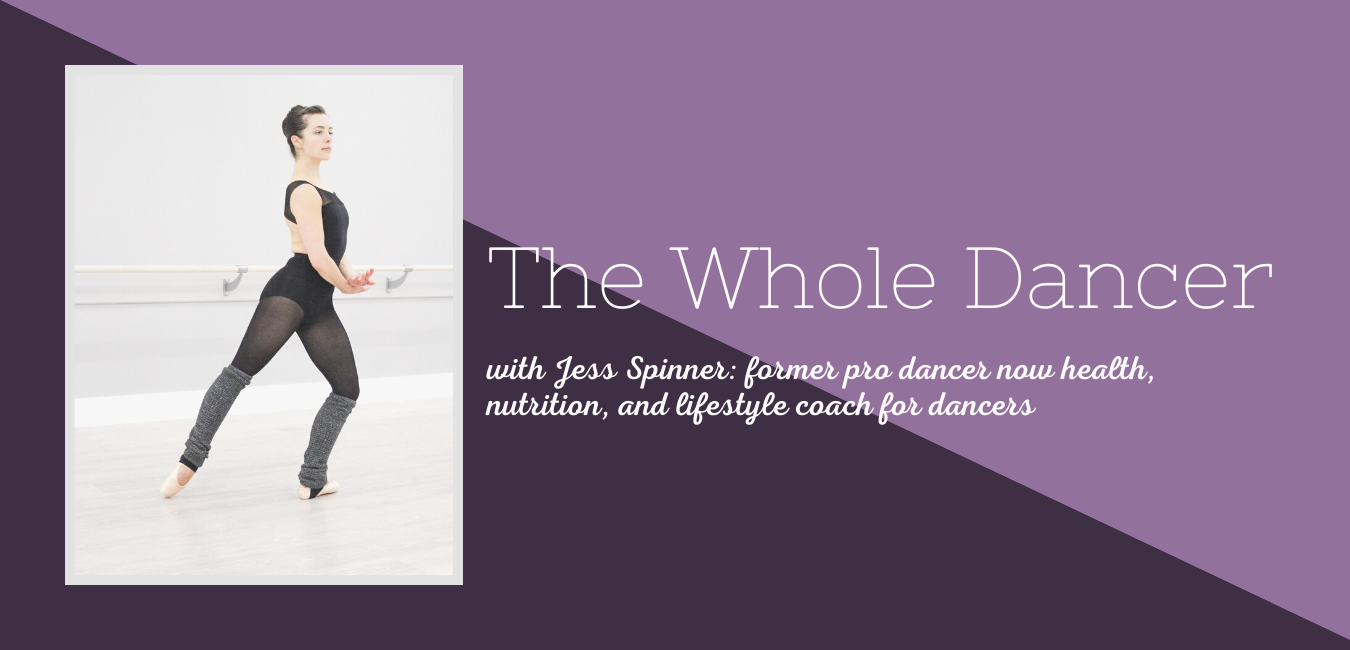Poor Diet and Injuries in Dancers
Part 1 of the Nutrition in Dancers Study
The training required to become a professional ballet dancer is rigorous. Competition is fierce, even while training, and once a professional level has been reached, dancers must maintain a high level of athletic ability in order to stay in a company.
Your typical athlete —even Olympians–have a peak season of training and performance and then an off season where their body can rest and recover. Dancers often do not get such a break. It’s frowned upon to take a summer off.
As a student, you train all year round with Nutcracker, a Spring performance, possible YAGP or ballet competitions…and instead of a break, you get a summer intensive.
As a professional dancer, it is pretty much the same except during the summer you look for summer gigs or training. It’s not to say that keeping your body in shape all year round is a bad thing, in fact it’s quite beneficial. However, over training is possible and is not healthy for your body.

What causes a dancer to do this? Partially it’s because this type of training and lifestyle has become the norm for a pre-professional or professional dancers. The perfectionism most dancers embrace is another big factor.
It takes a lot of hard work, perseverance, and dedication to make it to the top–but wisdom is invaluable. Often, dancers are so caught up in the hard work part, they forget that they are only human and the body can only be pushed so far. Dance may not be a sport but it’s very competitive.
It’s this same competitive drive, perfectionist spirit, and type A personality traits that allow dancers them to succeed in this profession.
You probably know the “need” a dancer has to get the combination correct as quickly as possible. Not only must the combination be correct, attention is paid to each and every detail. You can tell the difference between a recreational and professional dancer simply by their attention to detail.
It is these same qualities that can also lead to a dancer’s downfall. As discussed before, hard work, dedication, perseverance–they are all necessary. Pushing your body too far is, more often than not, a consequence.
Throughout this blog series you’ll see the factors that could either help or harm your chances of pursuing a professional career.
Part I will explore the link between malnutrition and why in can lead to an increase in injuries in dancers.
It’s no secret that vitamins and minerals are essential for a healthy body. Many people do not consume the amount of fruit and vegetables in the SAD (Standard American Diet) that are required for real health. To compound this issue, athletes require greater amounts of these nutrients because of their increased energy expenditure.

According to common calorie calculators, dance burns about 200 calories per hour. Compared to other forms of sports, this is a relatively low amount BUT, the professional ballet dancer or pre-professional student will dance anywhere from 20-40+ hours a week. This is at least an extra 600-1200 per day that a dancer needs beyond normal requirements. Couple this with the fact dancers must also maintain a high muscle mass relative to fat and the calorie burn increases.
Of course, calories are not everything. We have to remember not to focus simply on numbers. Yet, it’s important to show how many calories are recommended to show you how high your needs really are. A typical dieting dancer may try to reduce their calories to 1200 to lose weight–not only will they lack vital nutrients, this is not even HALF of the recommended intake required for proper bodily functions and energy to dance.
Not enough vitamin and mineral intake compounded with such high energy expenditure leads to malnutrition in dancers. Many do not realize the detrimental effects that malnutrition can have on the body.
Calcium, phosphorous, and magnesium are essential for strong bones. Dancers who are deficient in these minerals are likely to suffer from stress fractures. Another common mistake dancers make is when they decide to follow fad diets.
A popular fad diet used to be (and still is to some degree) the low-fat diet. Everyone is different, and for some, a low-fat diet may be healthy…but the general population requires fats to make up 25%-35% of their daily intake.
Fats are important for proper hormone function, especially in women. A low-fat diet could negatively affect a woman’s menstrual cycle. This may seem a blessing to a dancer whose day involves tights and a leotard–but ultimately in can lead to low estrogen, increased risk of stress fractures, and osteoporosis.

Not only are fats important for hormone function, fat soluble vitamins–A,D,E, and K–are only able to be absorbed by your body when you ingest adequate amounts of fat. So it doesn’t matter how many carrots or sweet potatoes you eat…if you are not consuming enough fats you will not be getting the vitamins you need.
Anemia—or iron deficiency—is another common issue, especially for female dancers. Those who are anemic not only suffer from lowered immunity, they are also much more prone to fatigue and weakness. Dancing requires massive amounts of strength and endurance, without which injuries are more likely to occur.
Fatigue, stress fractures, and shin splints—are common dancer injuries. Components such as phytonutrients, Omega 3s, and antioxidants help the body reduce inflammation, and heal from minor injuries before they become major.
As Benjamin Franklin said, “an ounce of prevention is worth a pound of cure.” This is so true…especially in the case of dancers! What does it mean though? It means, instead of waiting for your body to completely break from all the pressure placed upon it, build it up so it’s strong. Fuel properly. Hydrate. Make sure you are making the best choices you possibly can when it comes to food, vitamins, minerals, cross training, and rest.
It seems as if the answer would be to simply increase the variety of foods in the diet so that one would get enough of these important vitamins, minerals, and compounds. The answer though, is never this simple.
Dance, the very pursuit of which increases nutrient needs, also hinders some people from reaching the bare minimum requirements. We will discuss the roll that body image has in another part of this series, but it is important to note that disordered eating and unrealistic body goals are a contributing factor of malnutrition in dancers.
In pursuit of “the perfect dance physique” many restrict their food intake or create rules surrounding good food. These things are done to maintain a certain aspect of control that many dancers relish. They cannot control the physique they are born with or the casting decisions of directors, but they can control food.
This seems like a silly idea. “I can’t control what is around me…let me control my food,” but often, many cases of Anorexia, Bulimia, EDNOS, and BDD stem from control issues. This is so contrary to common sense as these issues end up controlling the dancer. It does not merely manifest in food issues–but it controls how the dancer acts, behaves, feels, and thinks. The more control they think they have, the more it is the disorder controlling them.

This isn’t the only reason dancer’s restrict, but it’s one of the main reasons that they do. Attempts to restrict typically backfire. You might end up binge eating—mostly on junk food—because you become hungry. It is the body’s way of saying FEED ME, FEED ME!!!!
The body is an intelligent design and will do all it can to preserve life. Restrict long enough and, even if you binge, your body will begin shutting down what it does not deem necessary. In other words, your body goes into survival mode.
You might successfully eat less throughout the day, then when no one is watching you lose control and eat too much. This leads to guilt, more restricting, more binges – it’s a slippery slope.
Okay, you think, I will just restrict a little bit. Eating disorders have the highest rate of death out of all mental illnesses. You have to stop before you even begin! Remember though, no matter how deep you are into restriction or any eating disorder, it is never too late to stop, nourish your body, and heal!
In fact, if you are suffering from an eating disorder act right now, don’t wait! Seek out a trusted friend, family member or physician to help you with your struggles. You will be surprised how many people struggle with similar issues–you are not alone! As dancers, we have a responsibility to help others, be outspoken, we cannot keep these problems under the curtain anymore.
Some dancers may be able to keep up the restriction by consistently eating very small amounts or cutting out food groups entirely. This will of course lead to weight loss, but because the dancer is not getting enough fuel, the body will begin to break down muscle.
The breaking down of the body, or catabolism, is part of the reason eating disorders and disordered eating is so dangerous. Under normal circumstances, the body will get energy from the food that you eat…eat less than you need and your body will start breaking down fat.
If you are trying to loose weight and not cutting food drastically, this can be a good thing. BUT, go too far, and the body will actually start holding onto the fat in an effort to protect the body. Not enough food will produce “starvation mode.” The body will try to store fat, breakdown muscle, eventual breakdown of organs, and the absence of “unnecessary functions.” Symptoms of starvation mode include:
- Constant fatigue (The lack of food energy alone causes this!)
- Constantly being cold.
- Storing of body fat.
- Absence of menstruation.
- Foggy brain
- And a multitude of other symptoms…
In both scenarios, you’ll be left weak, fatigued, and injury prone and will become malnourished. As you can see, a malnourished dancer is not a productive one.
Remember, weight loss is not the sole indicator of happiness. Weight loss is also not the reason people get a contract. Do you really want a contract with a company that only cares about your looks? Do you want to spend your dance career stressed out about your weight, food, and stress? Don’t settle. The only way to change the stereotypes in ballet is to make a difference.
What is most important is that you stay in top physical condition so that you can dance to your full potential. As with any athlete, top physical condition comes from having proper nourishment and rest. Nourishment so your body has the energy to thrive, succeed, and heal. Rest so your body is ready. Taking these preventative steps is important and necessary for a lasting and fulfilling dance career.
It’s not about the calories. It is much more important to be eating foods with plenty of vitamins and minerals then it is to worry about making sure you get the “diet” version of something.

Photo credit: PacificNorthwestBallet on Visual Hunt / CC BY-ND
Photo credit: colros on VisualHunt.com / CC BY
Photo credit: Hub☺ on Visual Hunt / CC BY-SA
Photo credit: Wicker Paradise on VisualHunt / CC BY

Pingback:The Missing Link in a Dancer's Training - Dancer Health Study Part II - The Whole Dancer